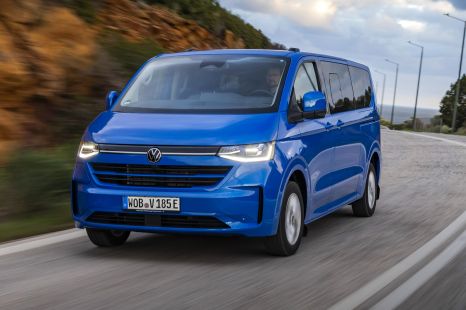

Dave Humphreys
2025 Volkswagen Transporter review: Quick drive
5 Months Ago
The Ford Transit Custom has spawned an electric version in its new generation, and we've driven it ahead of its local launch late this year.
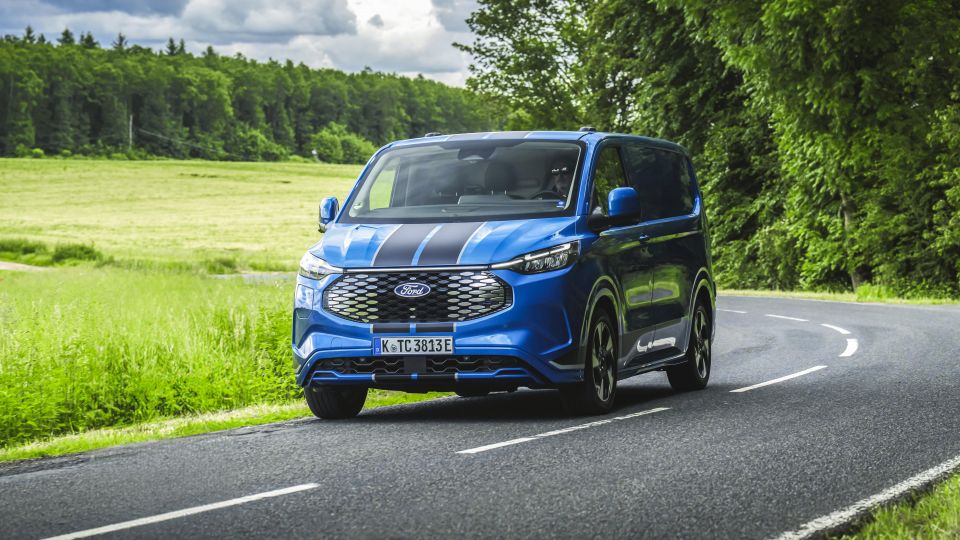
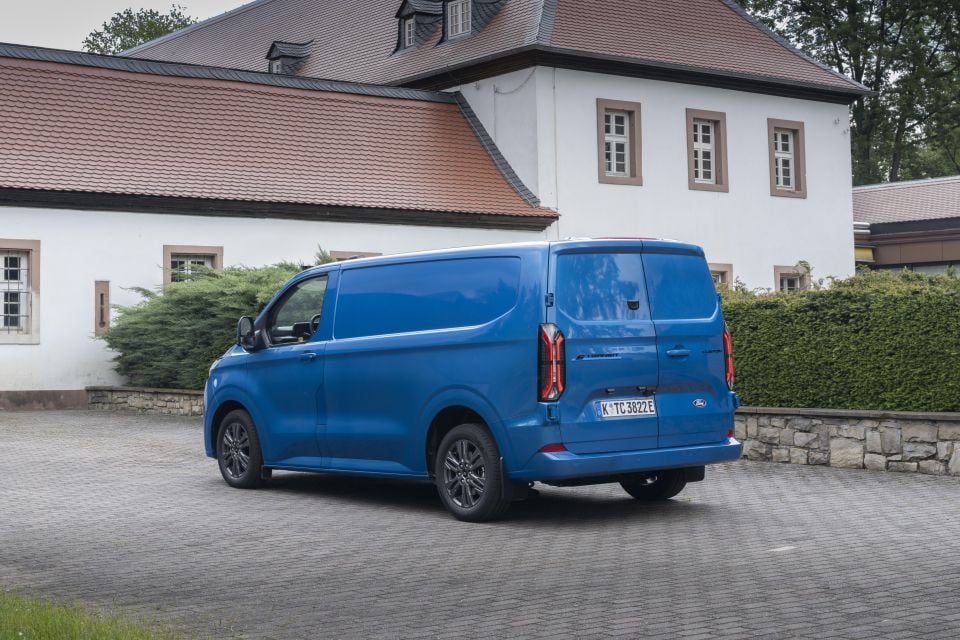

Quickly see how this car stacks up against its competition. Select any benchmark to see more details.
Where expert car reviews meet expert car buying – CarExpert gives you trusted advice, personalised service and real savings on your next new car.
The electric van market is still young, especially in Australia.

Renault first tried making a go of it all the way back in 2017 with the Kangoo Z.E., but it’s been essentially stagnant until the past few years when LDV, Mercedes-Benz and Peugeot got in on the action.
Enter Ford in 2023 with the E-Transit, a full-sized electric van. Now, it’s taking a crack at the popular medium electric van segment with the E-Transit Custom.
While customer deliveries of the diesel Transit Custom have already started in Australia, the electric van won’t arrive until the fourth quarter of 2024.
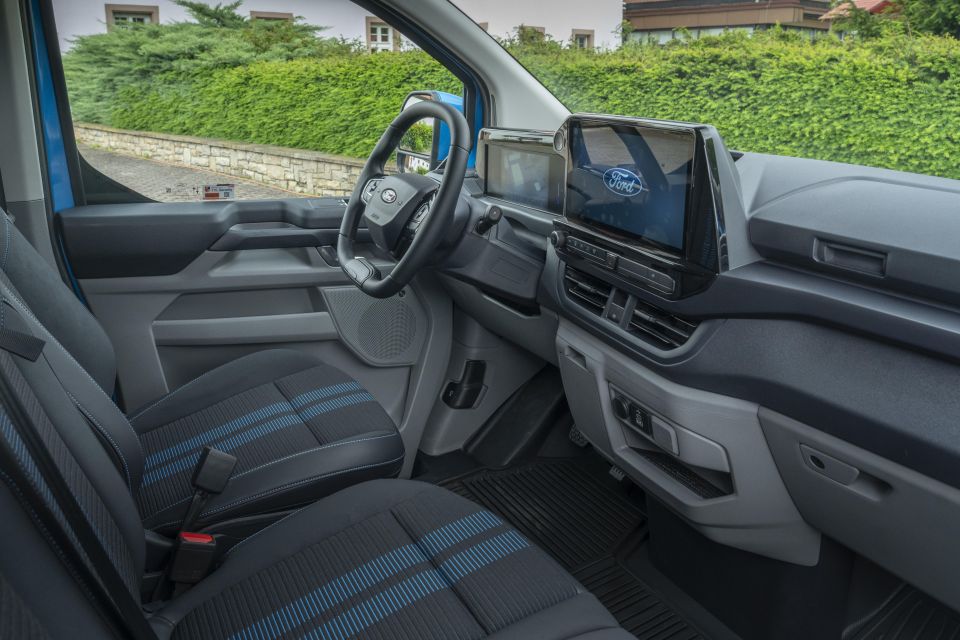
All Transit Custom models ride a new platform which Ford says is a clean-sheet affair, replacing the underpinnings used by the 2012-vintage outgoing Transit Custom which is closely mechanically related to the Transit.
This platform, which will also underpin the next-generation Volkswagen Transporter, supports not only the diesel and electric Transit Custom models coming here but also a plug-in hybrid powertrain that hasn’t been confirmed for Australia.
The electric models are distinguished from their diesel and plug-in hybrid counterparts with a unique grille and badging, but otherwise they look essentially identical.
We wish we could tell you.
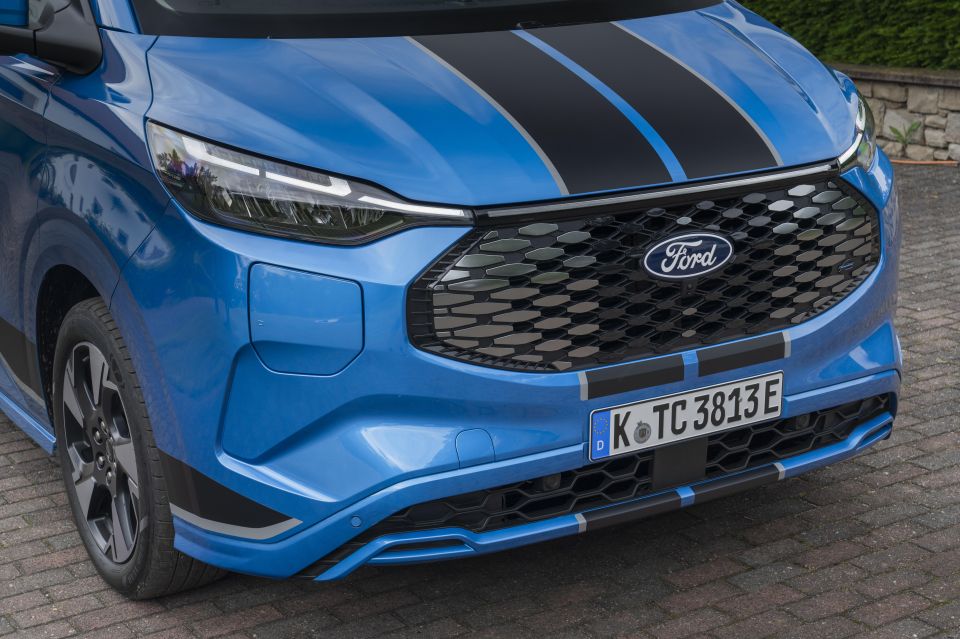
Ford Australia has yet to announce local pricing or specifications, though it has confirmed it will come here only in long-wheelbase guise, with a choice of standard or high roof options and a 160kW powertrain.
We expect the E-Transit Custom to be priced under the larger E-Transit, which currently retails for $89,990 before on-road costs after a recent $15,000 price cut.
Key rivals include:
All prices exclude on-road costs
The E-Transit Custom’s interior is simple, modern and functional.

As with other members of Ford’s new van and people mover range, the new electric model has a column-mounted shifter. This frees up space on the centre stack, but it’s an example of poor design.
Why? Because it feels essentially the same as the indicator/wiper stalk, which means you will probably hit it on the move at some point.
It’s rather like Mercedes-Benz’s shifter, rather than being chunky and impossible to mistake for an indicator stalk like, say, the column shifters Hyundai uses… or the huge one in the F-150.
We don’t object to the use of a column shifter, and indeed the use of one means the centre stack can be flatter, making it much easier to slide across the front bench between either door.
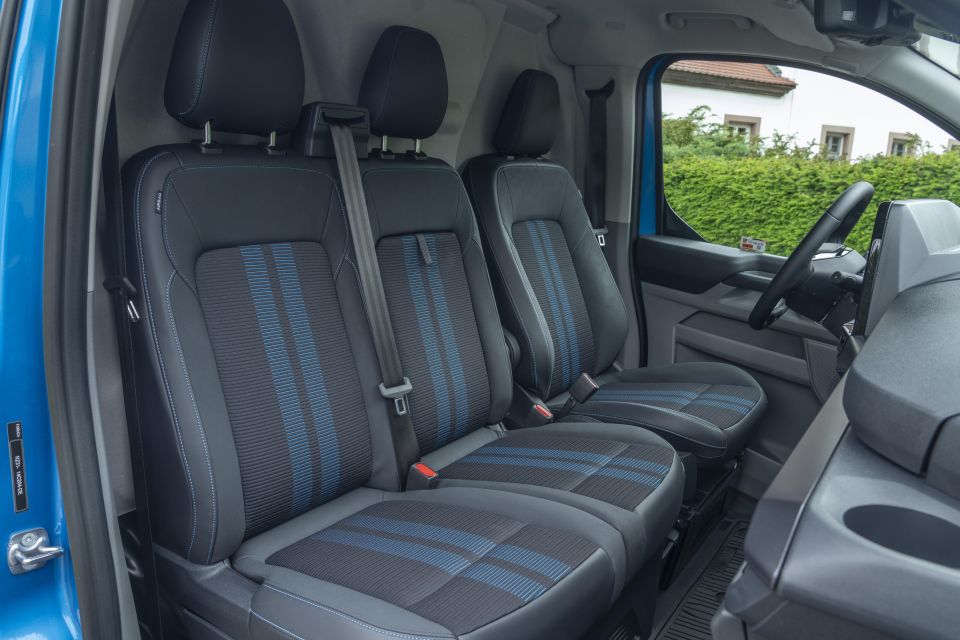
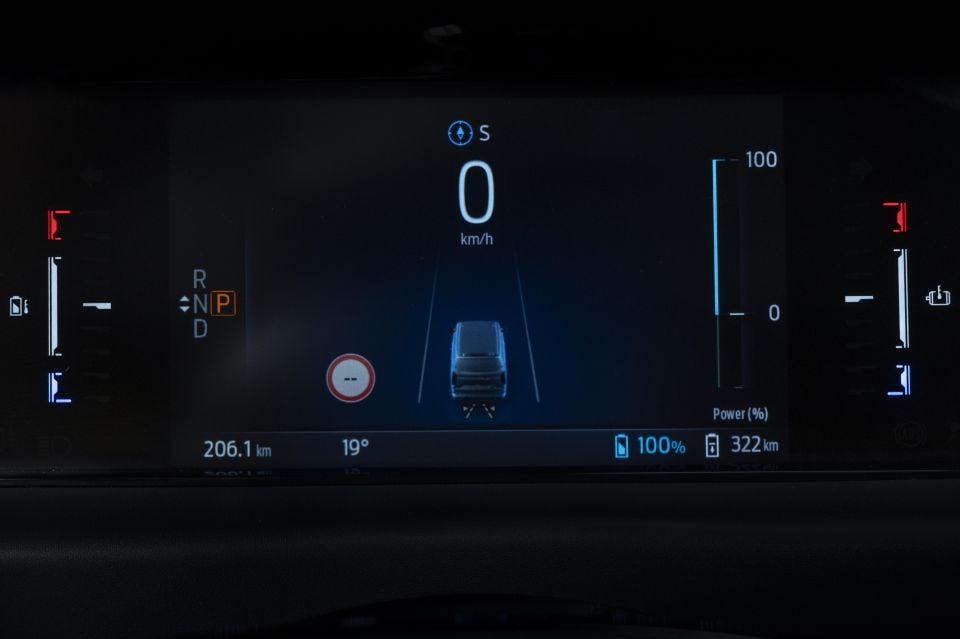
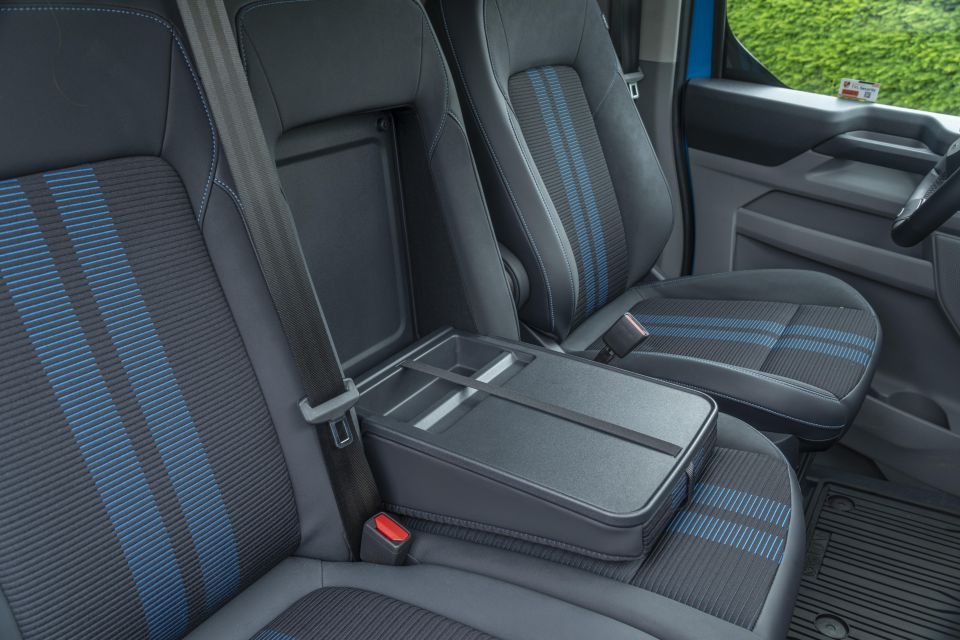

To that end, the completely flat floor up front is also welcome, particularly for the middle passenger. In addition to the column shifter, we have a couple of other gripes.
We appreciate the fitment of a wireless charging pad further down the centre stack, but it’s hard to tell whether your phone is charging, while you may find yourself unintentionally grabbing the plastic shelf below the grab handle when entering and exiting the vehicle.
These issues aside, the E-Transit Custom’s interior impresses with its modern design and functionality. Ford says it listened to various van buyers to find out what they thought was missing from their vans, and it ended up introducing some impressive new features.
One of these is a steering wheel, part of an optional Mobile Office Pack, that can be tilted and then fitted with a simple pop-on plastic cover, allowing you to work on your laptop from behind the wheel without awkwardly balancing it.

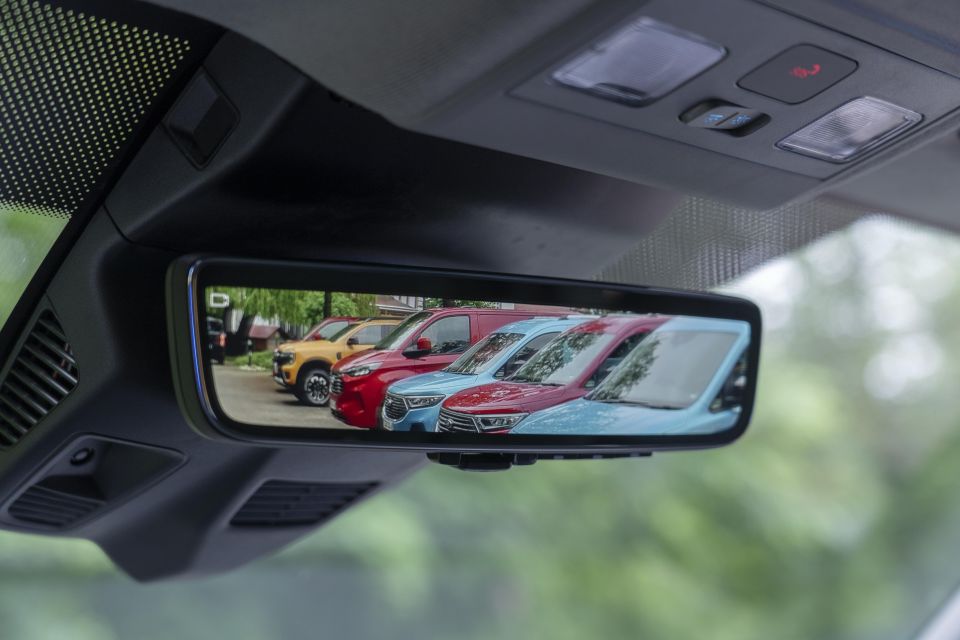
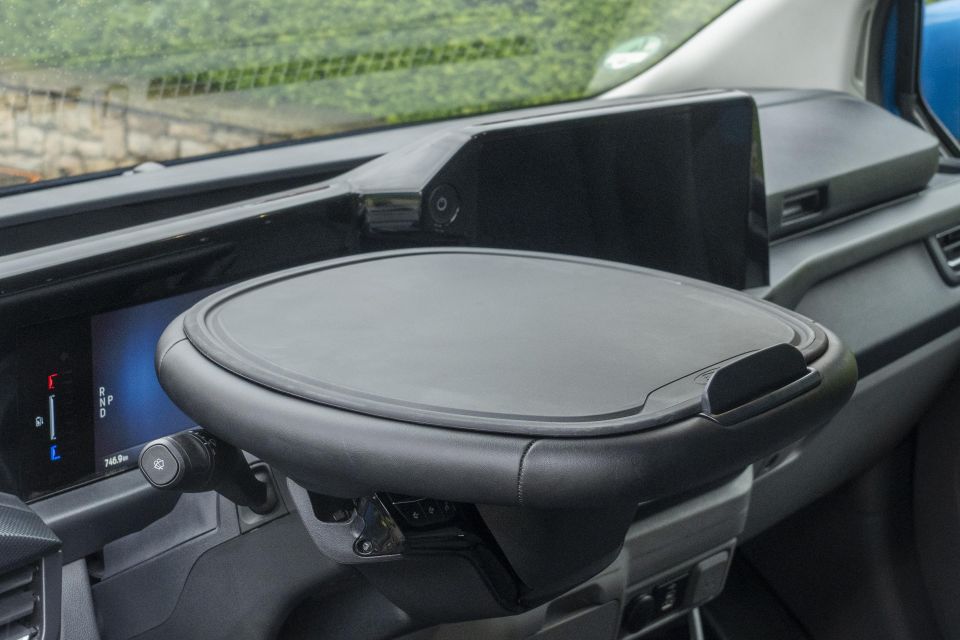
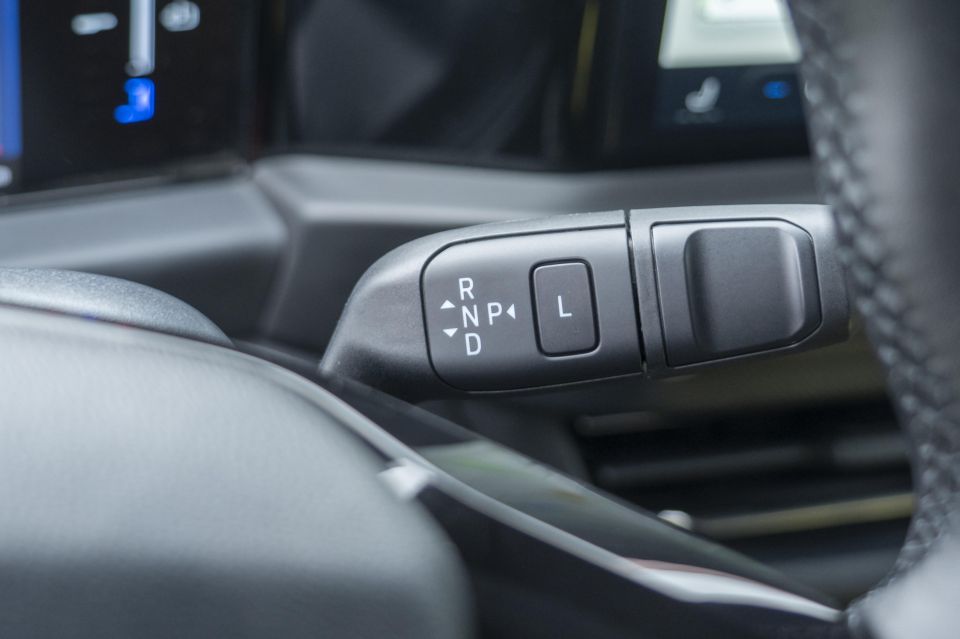
You can even fold it down entirely, with Ford showing how easy it is to eat a fast food meal off of it. When you’re not using the tray, you can slot it between the driver’s seat and the two-person passenger bench.
There’s also Delivery Assist, which is designed to make it easier for delivery drivers who are making dozens or even hundreds of stops per day.
When enabled, if you pop the E-Transit Custom into park, the van will turn on its hazards, close all its windows, and lock the door once you leave the van… and then do all that in reverse when you come back.
Ford’s Pro Power Onboard, which allows up to 2.3kW of power to be delivered from the battery to power appliances and tools, is also available – the outlet for this is on the D-pillar.
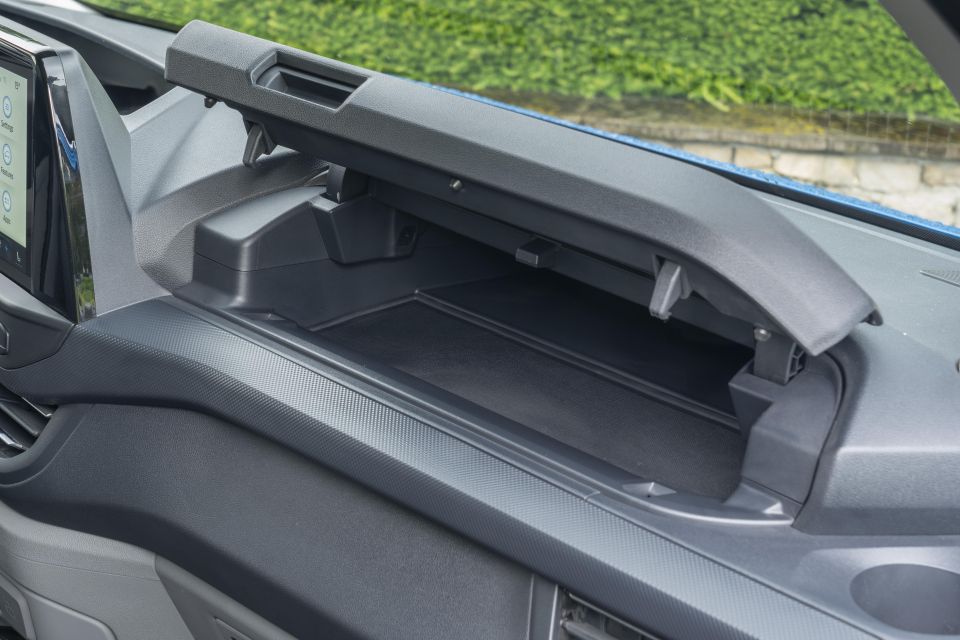


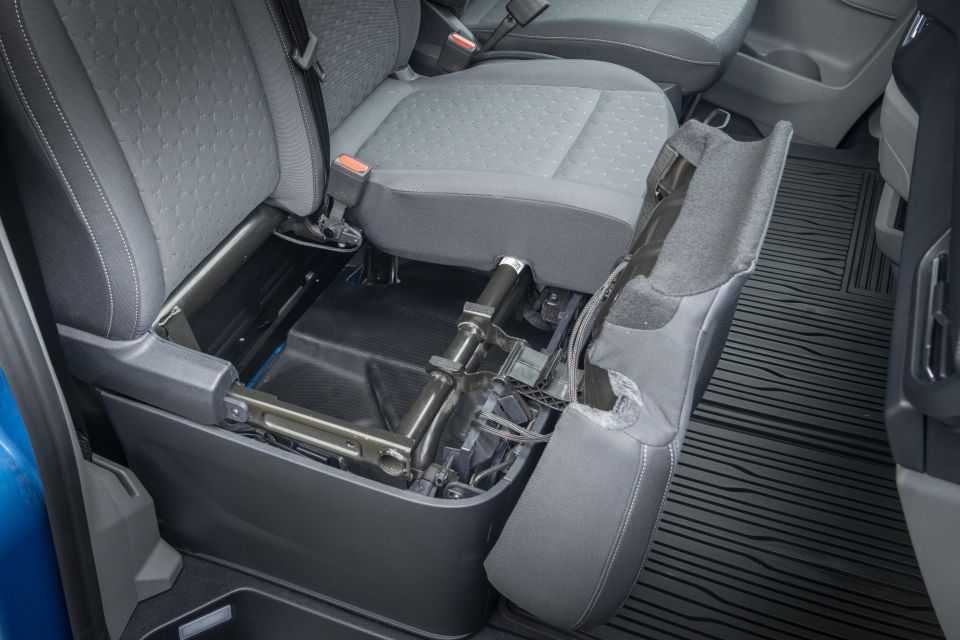
While there are three-prong power outlets elsewhere in the van, Ford says they don’t put out the same amount of power.
There are two different mounting points on the dashboard, covered by plastic flaps, which can be used for fitting aftermarket items like mobile phone holders without drilling holes into the dash.
Ford relocated the passenger-side airbag to the roof, allowing for an extra glove compartment. It’s not enormous, but it’s larger than the similarly situated compartments you’ll find in many utes.
There’s also storage atop the dashboard, as well as cavernous bottle holders in the doors.
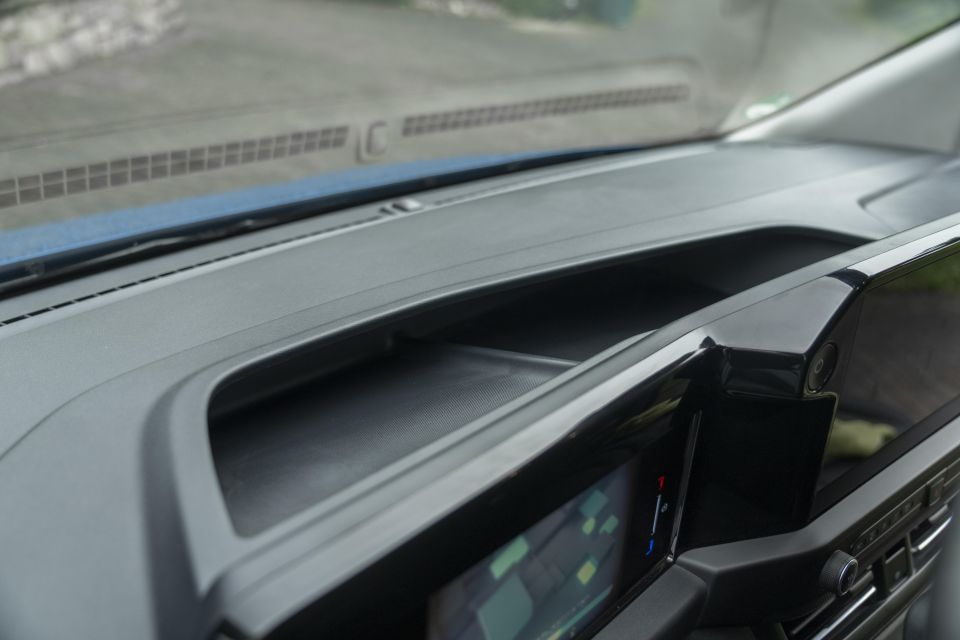
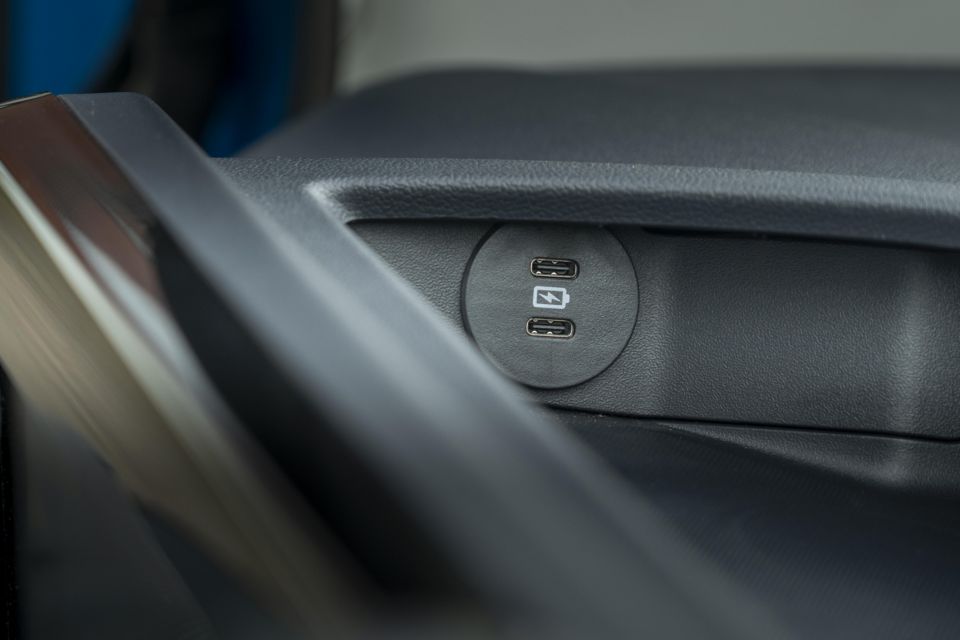
The available digital rear-view mirror is also handy. There’s really no better vehicle to have one of these fitted than a van, seeing as these typically have a bulkhead installed. The reversing camera also has a high resolution.
The technology in the van overall is impressive. The 7.0-inch digital instrument cluster will be familiar if you’ve been in a Ranger, and is bright and easy to read.
There are no physical climate controls, which isn’t ideal, however there’s an anchored climate control bar on the expansive 13-inch touchscreen which runs the SYNC 4 infotainment system. It’s therefore still fairly easy to adjust climate settings.
The touchscreen is not only large, it’s also helpfully angled towards the driver. SYNC 4 also has intuitive menus – some accessible via hard shortcut buttons below the screen – and crisp, attractive graphics.
Apple CarPlay and Android Auto can be used without a wire. There’s an embedded 5G modem, and the E-Transit Custom supports over-the-air updates.

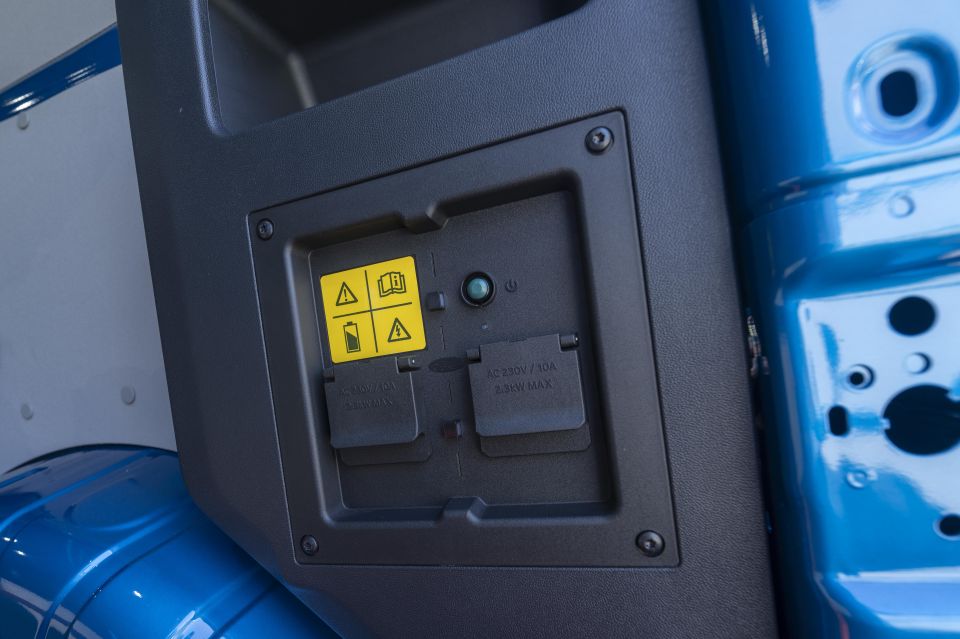
Ford says it has packaged the battery into the load floor above the sill flange, eliminating the need for separate crash structures.
Despite the large battery sitting underneath the load bay and the electric motor being fitted at the rear of the vehicle, load dimensions are the same as the regular Transit Custom.
In addition to carryover van and double cab models, the latter of which features a second row of seating, there’s a multi-cab variant. This features two seats in the second row, but a bulkhead that creates an L-shaped load bay.
This allows you to carry long, skinny items, which can extend all the way up to the front seatback, while also having a closed-off passenger cabin. The narrowest part of the load bay is 605mm wide.
There’s up to 9 cubic metres of cargo volume if you opt for the longest, tallest E-Transit Custom.
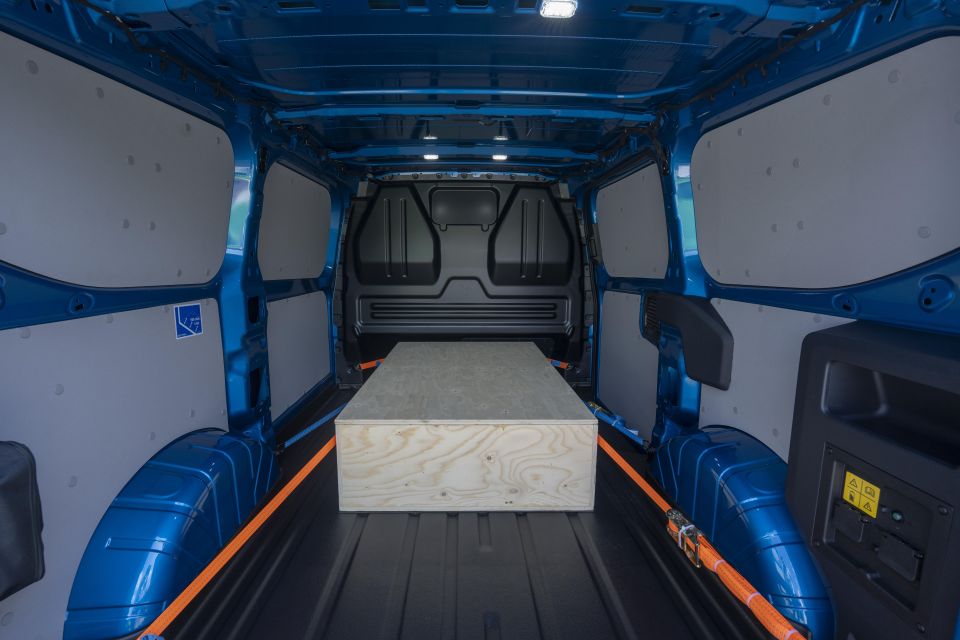
| Dimensions | E-Transit Custom L1H1 | E-Transit Custom L2H1 |
|---|---|---|
| Length | 5050mm | 5450mm |
| Width | 2032mm (2275mm incl. mirrors) | 2032mm (2275mm incl. mirrors) |
| Height | 1959-2040mm | 1959-2040mm |
| Wheelbase | 3100mm | 3500mm |
| Ground clearance | 140mm | 140mm |
| Maximum load height | 1433mm | 1433mm |
| Load length (to bulkhead) | 2602mm (van) 1604mm (double cab) | 3002mm (van) 2004mm (double cab) |
| Maximum load width | 1777mm (1392mm between arches) | 1777mm (1392mm between arches) |
| Load volume | 5.8m3 (van) 3.8m3 (multi-cab) 3.3m3 (double cab) | 6.8m3 (van) 4.7m3 (multi-cab) 4.3m3 (double cab) |
| Side door aperture width | 1030mm | 1030mm |
| Side door aperture height | 1301mm | 1301mm |
| Side door step height | 393mm-435mm | 393mm-435mm |
| Rear door aperture width | 1400mm | 1400mm |
| Rear door aperture height | 1316mm | 1316mm |
We tested a 160kW Sport with the shorter of the two wheelbases and the lower of the two roofs.
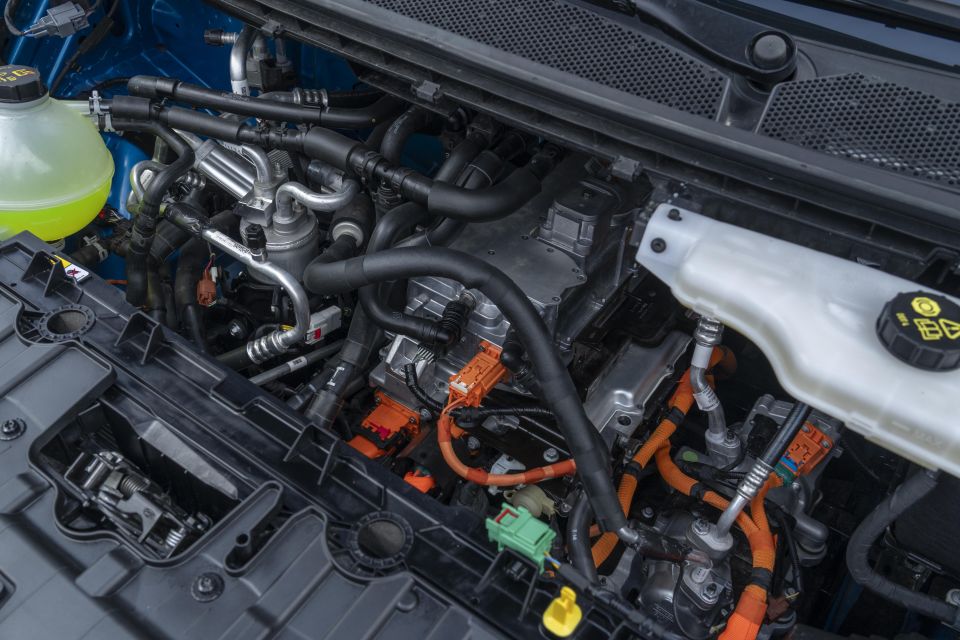
| Tech Specs | Ford E-Transit Custom Sport L1H1 |
|---|---|
| Drive type | Single-motor rear-wheel drive |
| Power | 160kW |
| Torque | 415Nm |
| Battery | 64kWh (useable) Nickel manganese cobalt |
| Electric range | 308km |
| DC charging capacity | 125kW |
| DC charge time (10-80 per cent) | Approximately 39 minutes |
| AC charge time (0-100 per cent) | Approximately 6.7 hours (11kW) Approximately 10.1 hours (7.4kW) |
| Gross vehicle mass | 3225kg |
| Maximum towing capacity | 2300kg |
| Kerb weight | 2263kg |
| Payload | 962kg |
The longest-range E-Transit Custom has 337km of WLTP range.
There’s not much difference in payload or kerb weight across the range. The highest payload figure is 1011kg. In contrast, the diesel Transit Custom has a payload figure of up to 1269kg.
Towing capacity sits neatly between the plug-in hybrid (2000kg) and diesel (2500kg) models.
We drove only the 160kW version, as well as the 210kW not-for-Australia MSRT which we’ll cover separately.
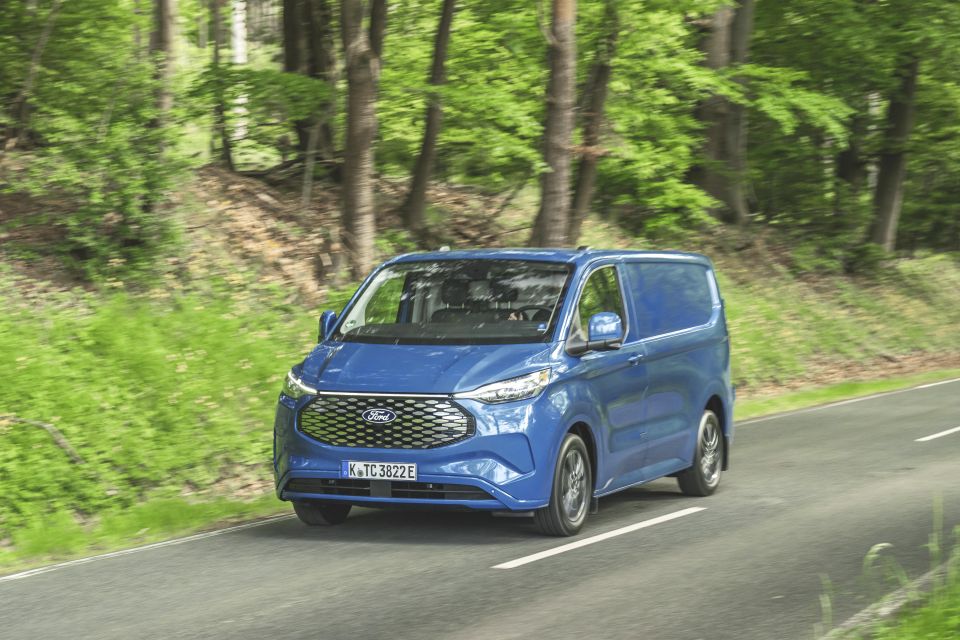
Interestingly, the 100kW and 160kW vans use the same electric motor, just with different tuning. If you want to know what the former feels like, just pop the latter in Eco mode wherein maximum power output will be limited to 100kW.
Regardless of tune, the E-Transit Custom has 415Nm of torque.
The extra weight of the battery down low means the ride is a touch firm and lumpy at times. Given we were in Germany, where the average road is smooth enough to play billiards on, we’re keen to see how it feels on crappier Australian pavement.
We wouldn’t say the E-Transit Custom is crashy, mind you, and it doesn’t skip around at the rear thanks to the fitment of semi-trailing arm independent rear suspension.

Where expert car reviews meet expert car buying – CarExpert gives you trusted advice, personalised service and real savings on your next new car.
It’s worth noting Ford had put in a pallet weighing half the van’s payload in the cargo bay. That means we were hauling around roughly 500kg of ballast.
Power is smoothly doled out, with no aggressive thrust off the line. Ford says it went with rear-wheel drive for the E-Transit Custom for greater capability and traction.
This led to the Blue Oval developing independent rear suspension for the van, which it ended up rolling out across the entire Transit Custom and Tourneo line.
While the larger E-Transit launched without a one-pedal drive mode, there’s one here, which can be activated via the touchscreen. This allows the vehicle to come to a complete stop without you needing to press the brake.
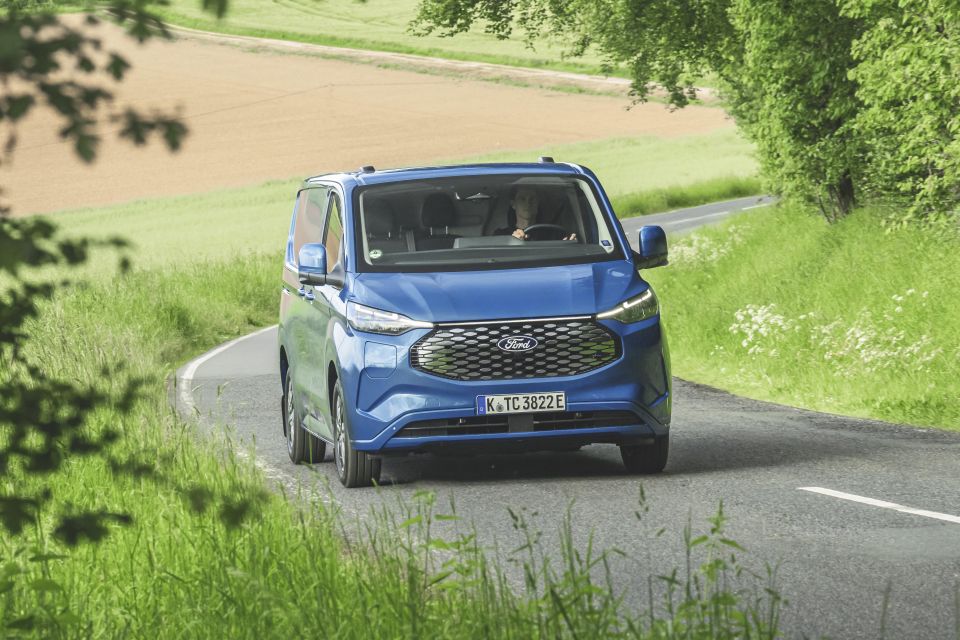
You either love or hate one-pedal drive, but in my experience once you get used to it in an EV you don’t ever want to be without it, so it’s a good thing Ford has included it.
The steering is nice and light, which makes manoeuvring around tight urban confines easy.
Get onto the motorway and you’ll find high-speed stability is good, but noise levels increase due to the wind whipping around the large mirrors.
The traffic sign recognition system worked quite well overall, and there’s intelligent speed limit assist which means when you have adaptive cruise control on, you can have the car automatically adjust its speed when the limit changes.
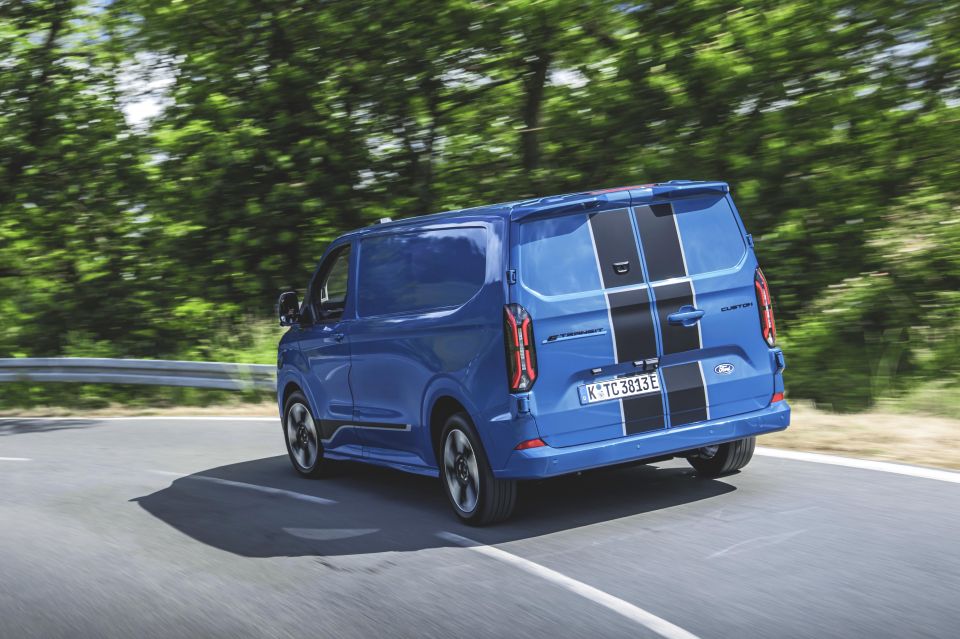
There’s no lane centring unfortunately, but lane-keep assist proved adept at keeping us within our lane even on winding roads. The cyclist detection also accurately detected when a cyclist was approaching on a narrow German street.
On our first drive loop with the E-Transit Custom, we started off with a full charge which had the Ford displaying a range of 294km.
After 47km of driving, mostly through towns and on motorways, we were down to 244km of range and 85 per cent charge, with average energy consumption of 20kWh/100km.
The E-Transit Custom will display your estimated range based on your energy consumption. Ford says energy efficiency is aided by what it’s calling an EV-first vapour-injected heat pump.
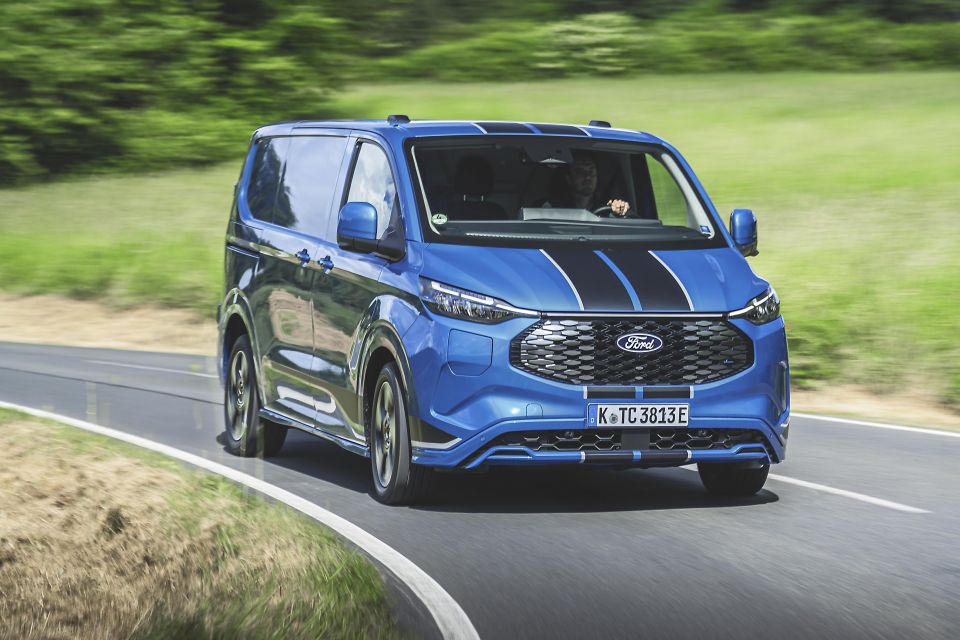
You can use the 11kW Ford Pro home charger to fully charge the E-Transit Custom in approximately 6.7 hours, while a 10-80 per cent charge on a 125kW DC charger takes 39 minutes.
Ford says in lab testing the E-Transit Custom added 82km of range with a 10-minute charge. While the E-Transit isn’t rated to tow, the E-Transit Custom has a braked towing capacity of 2300kg.
Ford hasn’t confirmed local specifications for the E-Transit Custom.

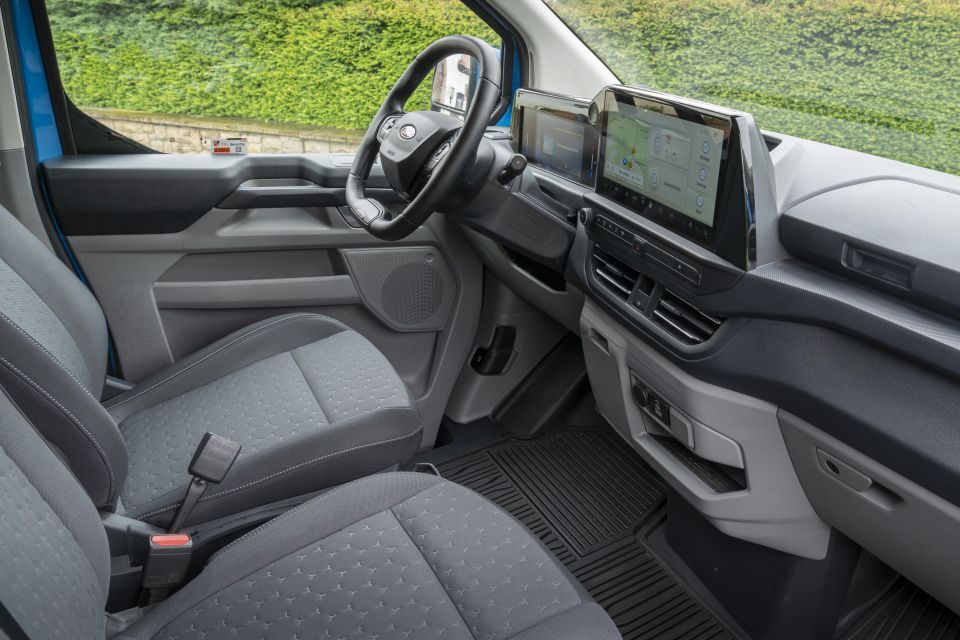

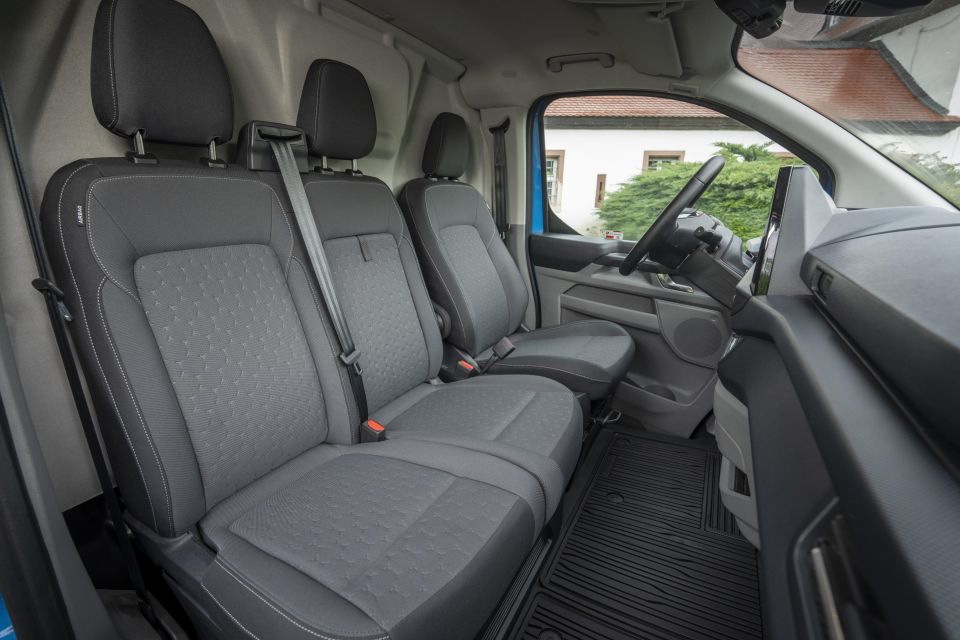
The European E-Transit Custom range opens with the Trend, which comes standard with:
Available equipment, in up-spec models and in option packages, includes:
The E-Transit Custom hasn’t been crash-tested by ANCAP or Euro NCAP, although the related diesel version received a Platinum rating in testing of its active safety technology.
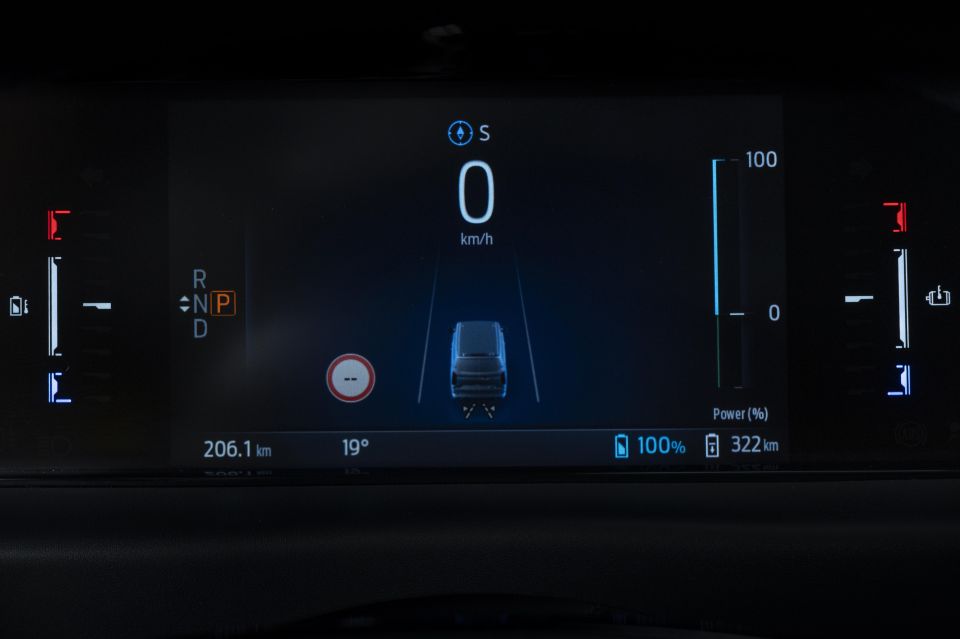
Standard safety equipment in Europe includes:
Available safety equipment includes:
The E-Transit Custom will be covered by Ford’s five-year, unlimited-kilometre warranty in Australia.
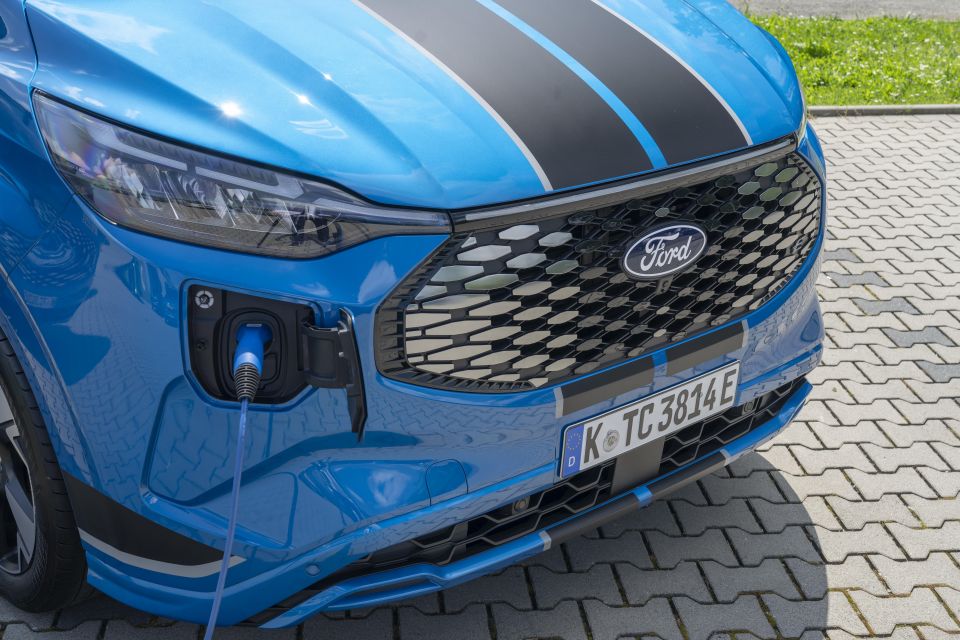
Ford Australia hasn’t confirmed servicing intervals or pricing, though Ford of Europe has two-year servicing intervals for the E-Transit Custom – with no mileage limit – and claims it’s 40 per cent cheaper to run than a diesel model.
We can’t throw bouquets at Ford just yet, as we still have some questions – how much will the E-Transit Custom cost in Australia, and what will it offer for its price tag?
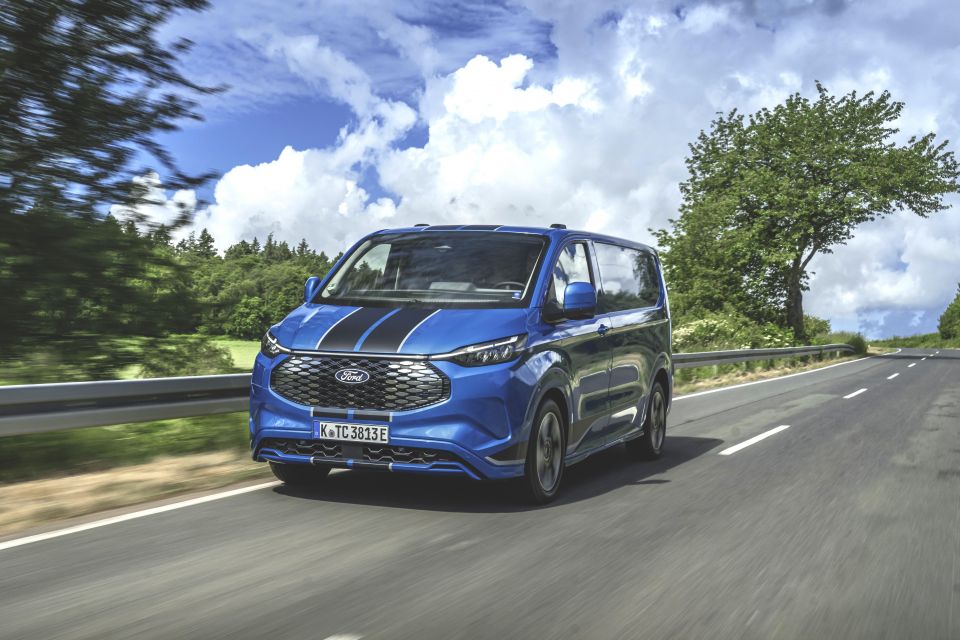
We also want to see how it will ride on rougher Australian roads, and how range and energy consumption will fare in more extensive local testing.
While those questions may loom, the E-Transit Custom has made a positive impression. There are plenty of solid on-paper specifications, like its torque and towing capacity figures. From behind the wheel, the E-Transit Custom proves quite a good van to drive.
The interior is thoughtfully designed and comfortable, while the tech is excellent. Payload may take a hit compared to most combustion-powered Transit Custom models, but load space doesn’t.
The electric van market may still be small in Australia, but the E-Transit Custom has the credentials to take a good chunk of it as it continues to grow.
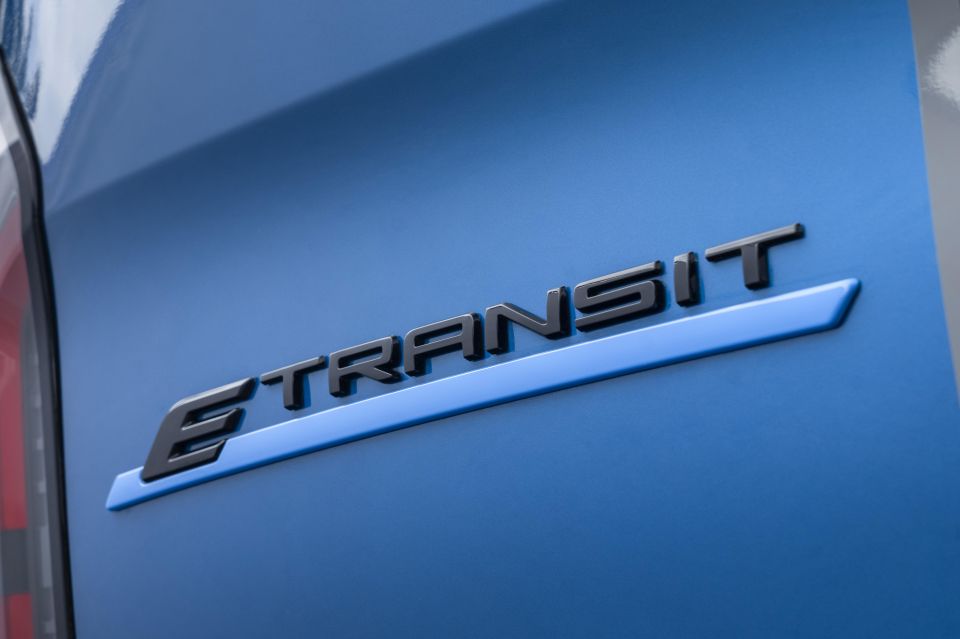
Click the images for the full gallery
MORE: Buy a Ford Transit Custom MORE: Everything Ford Transit Custom
Where expert car reviews meet expert car buying – CarExpert gives you trusted advice, personalised service and real savings on your next new car.
William Stopford is an automotive journalist based in Brisbane, Australia. William is a Business/Journalism graduate from the Queensland University of Technology who loves to travel, briefly lived in the US, and has a particular interest in the American car industry.


Dave Humphreys
5 Months Ago
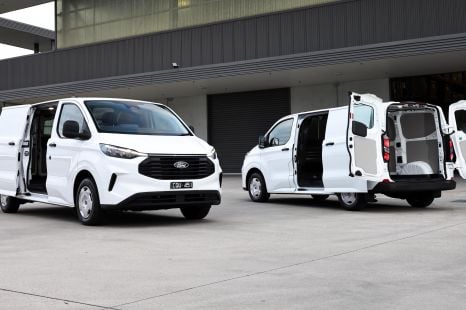

Max Davies
5 Months Ago


Josh Nevett
4 Months Ago
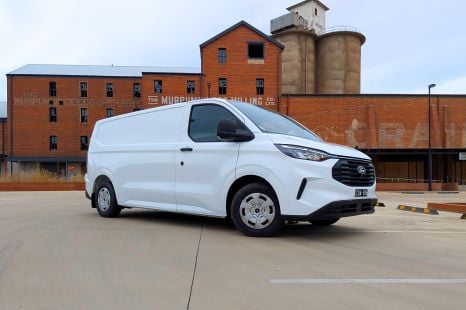

William Stopford
3 Months Ago
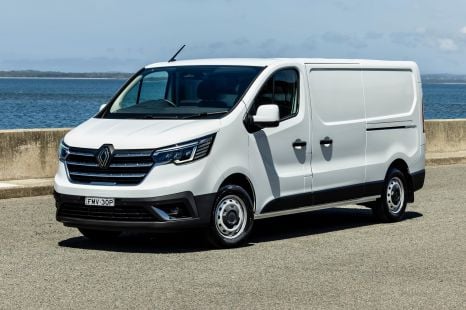

Max Davies
3 Months Ago
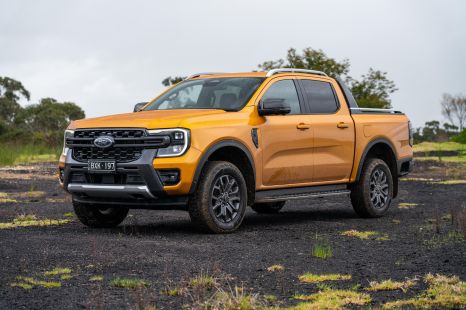

William Stopford
2 Months Ago